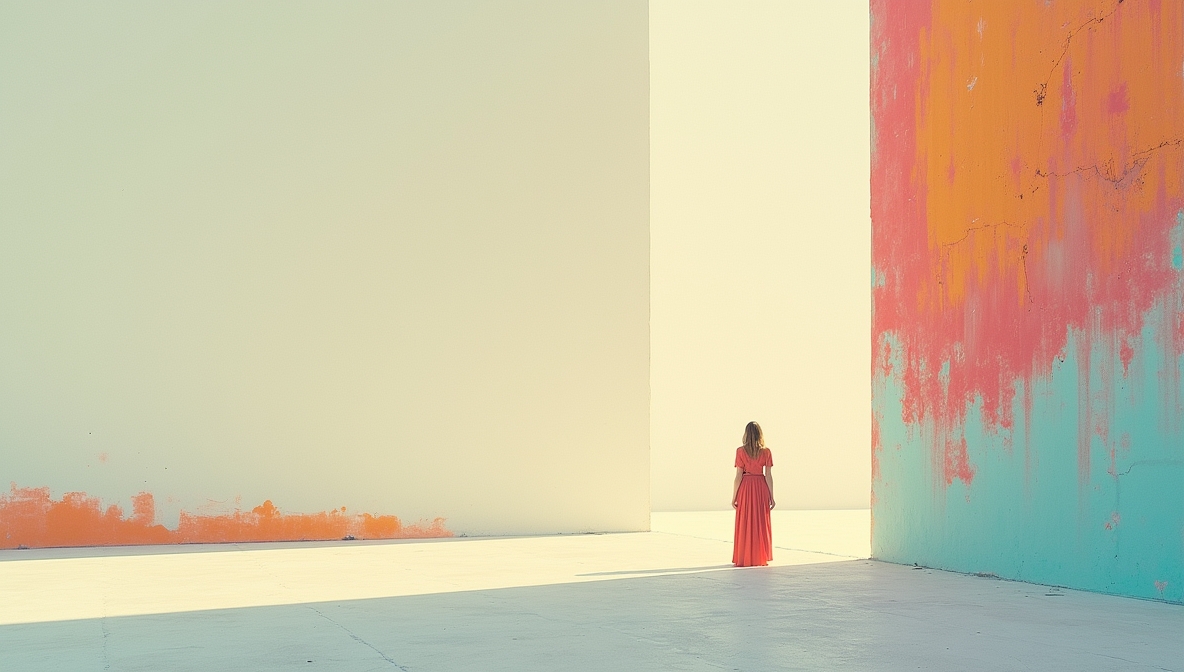Minimalist art strips away the unnecessary, leaving only the essence. It isn’t about simplicity for its own sake; it’s about focus, precision, and intentionality. Every shape, color, and form serves a purpose.
Some dismiss it as blank canvases and empty spaces, but that view overlooks its depth. Minimalism challenges perception, forcing the viewer to engage with what isn’t there just as much as what is. It demands patience and rewards those who take the time to absorb its subtle complexities.
Origins of Minimalist Art
Minimalism in art emerged in the late 1950s and gained traction through the 1960s. It was a reaction against the emotional intensity of Abstract Expressionism. While artists like Jackson Pollock filled canvases with chaotic energy, minimalists took the opposite approach—removing the excess to highlight structure and form.
Key influences included:
- Bauhaus Movement (1919–1933): Focused on functionality, geometric shapes, and clean design.
- De Stijl (1917–1931): Used primary colors and simple compositions.
- Russian Constructivism (1915–1930s): Emphasized abstraction and industrial materials.
By the 1960s, figures like Donald Judd, Frank Stella, and Agnes Martin defined minimalism in painting, sculpture, and installation art.
Core Principles of Minimalist Art
Minimalism follows a strict discipline of form and intention. Artists working in this style rely on a few guiding principles:
1. Reduction to Essentials
Every element in a minimalist work serves a function. There are no decorative flourishes—only what is necessary remains.
2. Geometric Precision
Shapes are often stark, clean, and structured. Squares, rectangles, and lines dominate compositions, eliminating any trace of hand-drawn imperfection.
3. Repetition and Seriality
Patterns and repeated forms create rhythm. Many artists produce series of works that explore slight variations within a structured framework.
4. Neutral and Limited Color Palettes
Monochrome, black and white, or a few carefully chosen colors define minimalist aesthetics. The absence of excessive color forces attention to composition and spatial relationships.
5. Interaction with Space
Minimalist art often extends beyond the canvas. Sculptures, installations, and even architectural interventions engage with the surrounding environment, encouraging a different kind of viewer interaction.
Notable Minimalist Artists and Their Impact
1. Donald Judd (1928–1994)
Judd revolutionized sculpture by creating works that blurred the line between art and industrial design. His metal boxes, often arranged in precise sequences, reject traditional narratives and focus purely on form and material.
2. Frank Stella (b. 1936)
Stella’s famous phrase “What you see is what you see” defines minimalism’s direct approach. His early paintings feature flat, geometric patterns without illusion or hidden meaning.
3. Agnes Martin (1912–2004)
Martin’s subtle, hand-drawn grids evoke a meditative quality. Her work demonstrates how restraint and delicate detail can evoke deep emotion without overt expression.
4. Dan Flavin (1933–1996)
Flavin transformed industrial fluorescent lights into art. His installations use color, light, and space to create immersive experiences.
5. Robert Morris (1931–2018)
Morris explored minimalism through large-scale sculptures that interact with their surroundings. His work challenges the traditional boundaries between viewer and artwork.
Why Minimalism Evokes Strong Reactions
Some dismiss minimalist art as lacking substance. Others see it as a profound statement on perception and meaning. The reaction often depends on how deeply one engages with the work.
- Expectation vs. Reality: Many expect art to tell a story or depict something recognizable. Minimalism defies that expectation.
- Patience Required: Unlike overtly expressive art, minimalism rewards careful observation. Small variations in texture, shade, or spacing reveal more over time.
- The Role of the Viewer: Minimalist art invites personal interpretation. Since it avoids explicit meaning, viewers project their own thoughts onto the work.
Common Misconceptions About Minimalist Art
1. “Anyone Can Do It”
At first glance, a blank canvas with a single stripe may seem effortless. In reality, achieving perfect balance, proportion, and execution requires discipline. The absence of distractions means every element must be intentional.
2. “It’s Just Empty Space”
Negative space plays an active role in composition. What isn’t painted or sculpted holds equal importance to what is.
3. “It’s Cold and Emotionless”
While minimalism removes personal expression, it doesn’t lack emotion. Agnes Martin’s grids, for example, evoke serenity and contemplation.
4. “It’s Too Simple to Be Meaningful”
Simplicity does not equate to lack of meaning. Minimalism asks viewers to engage differently, focusing on presence, material, and perception rather than narrative.
Minimalism Beyond Art: Influence on Design and Culture
Minimalist art has shaped architecture, fashion, graphic design, and music. Its principles extend into everyday life:
- Architecture: Mies van der Rohe’s “less is more” philosophy echoes minimalist ideals.
- Fashion: Designers like Jil Sander and Yohji Yamamoto embrace simplicity in clothing.
- Music: Composers like Steve Reich and Philip Glass use repetition and minimal structures.
- Graphic Design: Clean layouts and negative space drive modern branding aesthetics.
How to Appreciate Minimalist Art
Minimalism demands a shift in perspective. To engage with it fully:
- Slow Down: Give yourself time to absorb the details.
- Observe the Space: Notice how the artwork interacts with its surroundings.
- Consider the Materials: Focus on texture, color, and structure.
- Avoid Overthinking: Let the work exist without searching for a hidden message.
Minimalist art challenges assumptions, rewarding those who engage with patience. Its impact stretches far beyond the gallery, influencing design, architecture, and culture worldwide.



